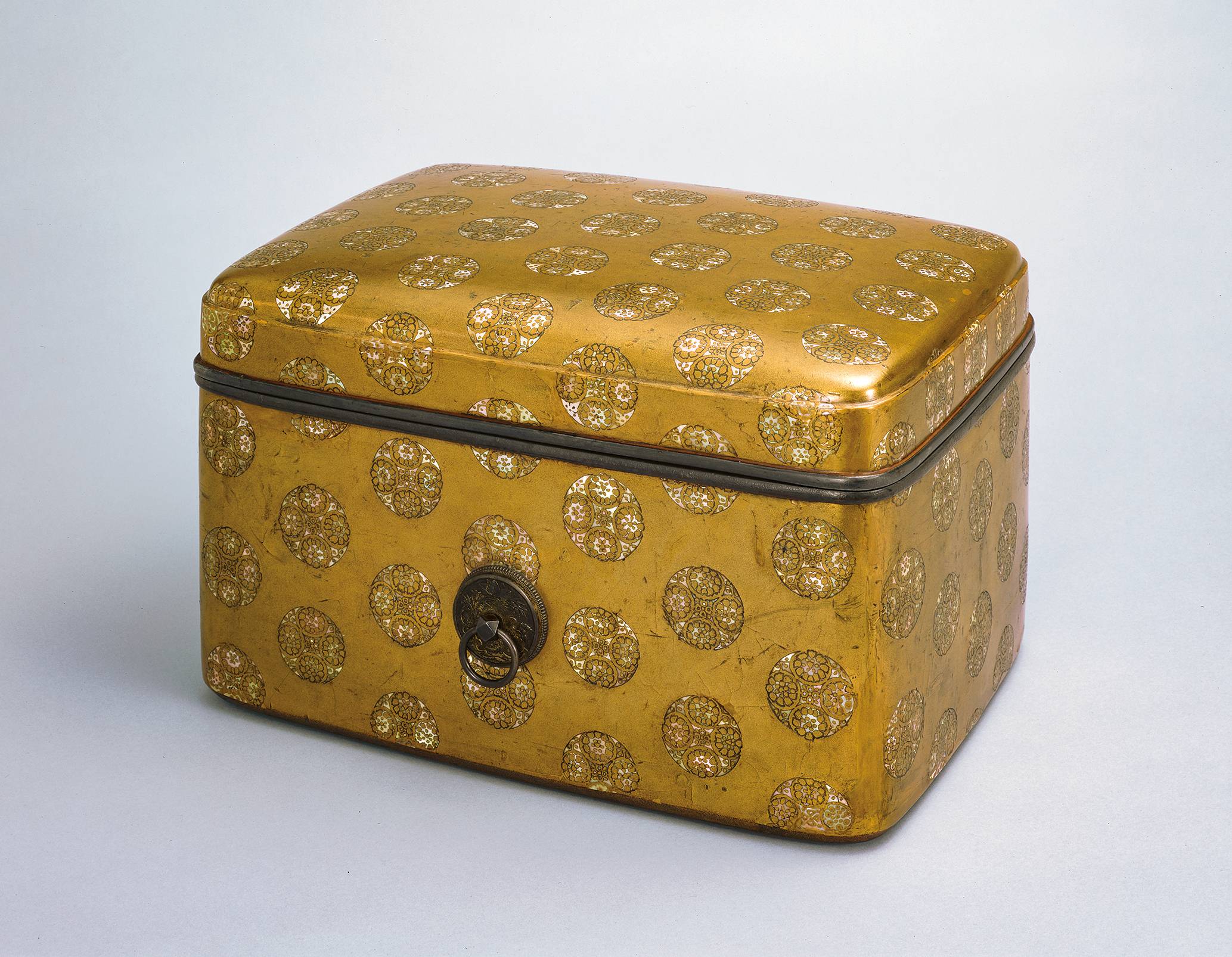From vibrant kimono to exquisite lacquerware and woodblock prints, Japanese aesthetics encompass a vast spectrum of art and craftsmanship permeating every facet of society. Since its opening in 1961, the Suntory Museum of Art has displayed troves of treasures reflecting this diverse range of artistic expression.
Celebrating the completion of an eight-month renovation, the museum, which reopened on July 22, is currently holding an exhibition highlighting the deep connection between art and everyday life. Titled “Art in Life, Life and Beauty,” and running through Sept. 13, the exhibition features tableware, clothing, samurai armor and other items that exude elegance and capture the rich traditions of Japanese art. Other works on display include pieces from contemporary artists that incorporate traditional motifs in depictions of modern subjects.
In Japan, refining one’s attire has often been associated with the notion of honing the spirit. In recognition of this belief, the exhibition is dedicating a section to attire. Items on display span more than a millennium, from the Heian Period (794 to 1185) to the present day. Among the pieces is an opulent box adorned with a fusenryŌ (medallion) pattern, marked with traditional circular flower motifs with gold maki-e (lacquer) and mother-of-pearl inlay. Created in the Kamakura Period (1185 to 1333), the box is a masterpiece of lacquerware and a designated National Treasure. Visitors will also be able to admire gorgeous lacquer mirror stands, incense boxes, hairpins and other items made from a variety of materials using different techniques.
Ukiyo-e provide a glimpse into fashion trends that proliferated during the Edo Period (1603 to 1868). Among these prints is a genre known as bijinga, which depicts beautiful women donning fashionable, vibrant attire. Commoners experienced an increase in wealth in the Edo Period, and it was during this time that kosode (short-sleeved kimono) transitioned from a piece of attire primarily worn by upper-class individuals to one commonly worn by townspeople. The attire depicted in the museum’s collection of bijinga reflects these cultural changes, and observers can look into hairstyle trends that came into fashion at certain points in history, such as buns and long, flowing hairstyles in the Edo Period, and Western-inspired ornamentation in the Meiji Era (1868 to 1912).
The importance of aesthetics in everyday life extended to the warrior class, who recognized beauty as an integral part of their presentation on the battlefield. This attitude is reflected in the elegant armor, flags, garments, war horns and weapons that samurai wielded in battle. One of the museum’s pieces dedicated to samurai aesthetics is a striking red suit of armor from the Momoyama Period (1573 to 1615), believed to have belonged to the nephew of Toyotomi Hideyoshi, a powerful 16th-century daimyo. The works on display demonstrate supreme craftsmanship, with exquisite designs that have captivated admirers for centuries.
Banquets and seasonal festivals have inspired a wide array of artistic creations throughout Japanese history. Among these are folding screens characterized by dazzling golden hues and graceful depictions of wildlife. These screens enhanced banquet rooms, where groups gathered for wedding celebrations or to commemorate the birth of a child. Among the museum’s collection is a 17th-century folding screen displayed on such occasions that portrays a pair of phoenixes atop paulownia trees. Another folding screen depicts the scene of a banquet at an official residence, with attendees dancing to musical performances in the courtyard. Guests will also be able to appreciate a collection of beautiful glassware used to serve sake, as well as a lacquer box from the Meiji Era designed with striking seasonal motifs.
During the Momoyama Period, aristocrats and commoners alike were exposed to a variety of Western goods introduced to Japan via Portuguese and Spanish traders. This exciting moment of cultural exchange inspired a genre of folding screens illustrating scenes of giant Western ships filled with traders, exotic goods and animals arriving at Japanese ports. Commoners’ curiosity in these people from faraway lands spawned numerous sub-genres of this style of folding screens. Moreover, exposure to Western culture significantly influenced Japanese artists, some of whom learned perspective and shadowing techniques at Jesuit schools that operated in Japan in the late 16th to early 17th centuries. In addition to screens depicting exchanges between Western traders, the exhibition also features works from Akira Yamaguchi, who draws from these rich traditions to create ingenious overhead perspectives of Narita International Airport and other contemporary settings.
The influence of Western culture on Japanese aesthetics also impacted the production of lacquerware. With its glossy, black exterior and intricate gold and mother-of-pearl designs, Japanese lacquerware captured the attention of Westerners, which made it a highly sought-after item among overseas customers. Due to this demand, Japanese craftspeople began creating lacquerware that appealed to Western tastes. These items, which are on display at the exhibition, were used by their owners in various settings, including religious ceremonies and for storing tools for outdoor tea ceremonies. Conversely, Western goods also proliferated throughout Japan, a notable example of which is karuta. Deriving its name from the word carta (meaning “card” in Portuguese), karuta is a type of Japanese playing card first introduced to Japan by Portuguese traders in the 16th century.
All of these items are displayed on a rotating basis at the Suntory Museum of Art between 10 a.m. and 6 p.m., except Tuesdays when it is closed (Sept. 8 is an exception). Admission is ¥1,500 for general visitors, ¥1,000 for high school and university students and free for junior high school students and younger.
The Suntory Museum of Art is in Tokyo Midtown, directly connected to Roppongi Station or three minutes from Nogizaka Station.
Suntory Museum of Art
https://www.suntory.com/sma/
TEL: 03-3479-8600
Tokyo Midtown Galleria 3F, 9-7-4 Akasaka, Minato-ku, Tokyo 107-8643, Japan








